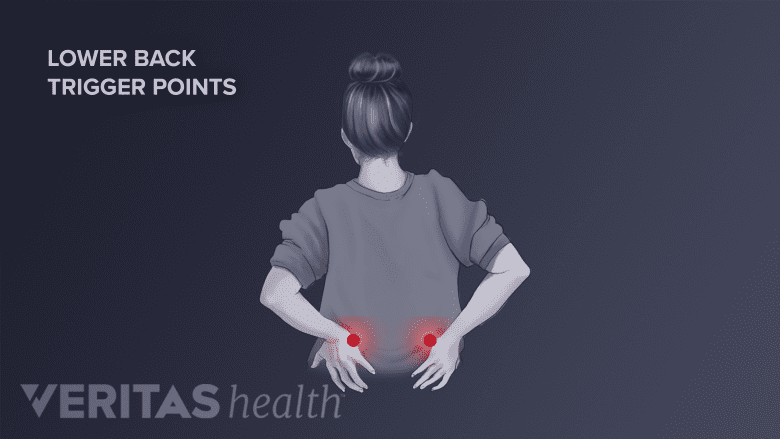The sacroiliac joint injection procedure is minimally invasive and can be performed in an outpatient setting. The procedure typically takes less than 15 minutes, and patients can usually return home on the same day.1Foster ZJ, Voss TT, Hatch J, Frimodig A. Corticosteroid Injection for Common Musculoskeletal Conditions. Am Fam Physician. 2015;92(8):694-699. https://pubmed.ncbi.nlm.nih.gov/26554409/
In This Article:
- Sacroiliac Joint Injection for Lower Back Pain
- Sacroiliac Joint Injection: Procedure, Pain Relief, and Recovery
- Sacroiliac Joint Injections: Risks, Success Rates, and Long-Term Outcomes
- Sacroiliac Joint Steroid Injection Video
Preparing for an SI Joint Steroid Injection Procedure

It is crucial to obtain a comprehensive medical history before the injection treatment.
The basic steps involved before an SI joint injection include:
- Medical history review. The doctor reviews the patient’s medical history to ensure that no conditions could interfere with the procedure or the injection. A medical history may include checking for allergies to medications, recent illnesses, and any current medications the patient takes.
- Physical examination. The doctor may perform a physical examination to confirm the pain’s location and check for any signs of infection or other conditions that could interfere with the procedure.
- Imaging studies. Prior to the injection, the doctor may order imaging studies, such as x-rays or magnetic resonance imaging (MRI), before the injection to get a better look at the SI joint and the surrounding structures.
Once a patient has been medically cleared, they may be directed by their physician to stop taking certain medications, like blood-thinning medications, a few days before the procedure.
SI Joint Steroid Injection Procedure: A Step-by-Step Guide
SI joint injections are typically performed in a hospital or an outpatient surgical center, and patients can return home the same day.
The procedure is usually done in a special x-ray procedure room, which allows the doctor to use fluoroscopy (live x-ray) and contrast to guide the needle into the correct position in the SI joint.1Foster ZJ, Voss TT, Hatch J, Frimodig A. Corticosteroid Injection for Common Musculoskeletal Conditions. Am Fam Physician. 2015;92(8):694-699. https://pubmed.ncbi.nlm.nih.gov/26554409/
The injection procedure usually takes about 15 minutes, but patients are monitored for about 30 minutes to an hour after the injection, so the entire process may take 1 hour.1Foster ZJ, Voss TT, Hatch J, Frimodig A. Corticosteroid Injection for Common Musculoskeletal Conditions. Am Fam Physician. 2015;92(8):694-699. https://pubmed.ncbi.nlm.nih.gov/26554409/
The procedure for an SI injection typically includes the following steps:
- The patient is positioned on their stomach on the procedure table.
- The skin over the SI joint is cleaned, and a local anesthetic is used to numb the area.
- Using fluoroscopy or ultrasound guidance, the doctor inserts a thin needle into the SI joint.2Cohen SP, Chen Y, Neufeld NJ. Sacroiliac Joint Pain: A Comprehensive Review of Epidemiology, Diagnosis and Treatment. Expert Rev Neurother. 2013;13(1):99-116. http://doi.org/10.1586/ern.12.148
- Once the needle is in the correct position, contrast is injected to ensure that the needle is positioned in the joint and that there is no vascular uptake (a condition where the injectate enters the bloodstream).
- Then, the doctor injects the medication into the joint.
- After the medication is injected, the needle is removed, and a small bandage is applied over the injection site for any possible bleeding.
The patient is observed for a short period following the procedure to ensure there are no adverse reactions to the medication. The vital signs are continuously monitored during this time.
Doctors who perform SI joint injections
The injection procedure is typically performed by doctors who specialize in pain management, including anesthesiologists, physiatrists, or radiologists. In some cases, orthopedic surgeons or neurologists may also perform the procedure.
What to Expect After SI Joint Injection Procedure: Pain Relief and Recovery

The injection site may remain painful for a few hours after the procedure.
After the procedure, patients may return home, and they can usually drive themselves home unless sedation is used for the procedure.
The injection site may become painful a few hours after the procedure when the effect of the anesthetic wears off, but the injection medication will start working in a few days, reducing inflammation and pain. Additional oral pain medications may be prescribed for a short period.
In general, there are no major activity limitations after the procedure. Patients are encouraged to proceed with activity as tolerated and can increase their exertional levels under the guidance of a medical professional.1Foster ZJ, Voss TT, Hatch J, Frimodig A. Corticosteroid Injection for Common Musculoskeletal Conditions. Am Fam Physician. 2015;92(8):694-699. https://pubmed.ncbi.nlm.nih.gov/26554409/
- 1 Foster ZJ, Voss TT, Hatch J, Frimodig A. Corticosteroid Injection for Common Musculoskeletal Conditions. Am Fam Physician. 2015;92(8):694-699. https://pubmed.ncbi.nlm.nih.gov/26554409/
- 2 Cohen SP, Chen Y, Neufeld NJ. Sacroiliac Joint Pain: A Comprehensive Review of Epidemiology, Diagnosis and Treatment. Expert Rev Neurother. 2013;13(1):99-116. http://doi.org/10.1586/ern.12.148

